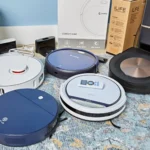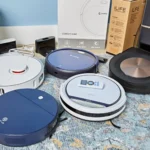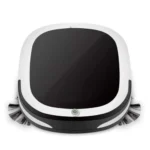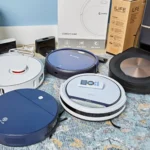We all want our homes to be clean and free from dirt and debris, but the task of cleaning can be daunting, especially without the right tools. This is where a canister vacuum cleaner comes in handy. If you’re not familiar with canister vacuums or how they work, don’t worry. In this article, we’ll break down everything you need to know about canister vacuums in a step-by-step manner. From the design and functionality to the benefits and maintenance, we’ll cover it all. So let’s jump right in and explore the world of canister vacuum cleaners.
What is a Canister Vacuum?
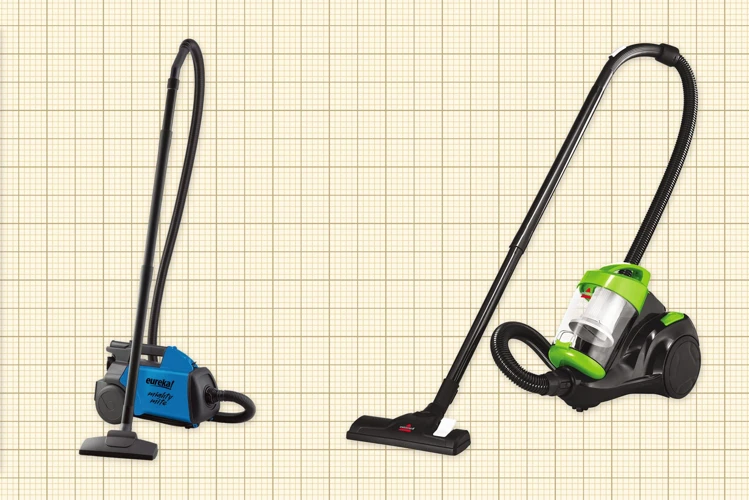
When it comes to keeping your house clean, having the right tools can make all the difference. One of those tools is a canister vacuum. This type of vacuum is a popular choice thanks to its unique design and functionality. Unlike an upright vacuum, a canister vacuum separates the motor and dustbin into two distinct units connected by a flexible hose. This design offers many benefits that make canister vacuums a favorite of homeowners everywhere. In the following sections, we’ll explore the anatomy and workings of a canister vacuum and the advantages it offers over other types of vacuums. We’ll also discuss factors to consider when choosing a canister vacuum, as well as tips for maintaining and using it effectively. So keep reading to learn more about canister vacuums and how they can make your cleaning routine easier and more efficient.
Design
Design: Canister vacuums are designed to have a compact and lightweight body with a handle on top for easy maneuverability. The canister, which houses the motor and the dustbin, is attached to a long and flexible hose that connects to the suction nozzle. The canister is typically made of plastic and can range in size from small and portable to larger and heavy-duty models. The suction nozzle is attached to the end of the hose and is designed with a brush roll and/or powered air nozzle to help loosen and lift dirt and debris from different surfaces.
One of the main advantages of canister vacuums is the ability to use a variety of attachments for various types of cleaning tasks. These attachments can include crevice tools, dusting brushes, and specialized nozzles for upholstery and hard floors. The attachments are usually stored on the canister itself or in dedicated compartments, making them easy to access when needed. Some canister models even come with telescopic wands to help reach high or tight spaces.
The design of the canister vacuum also allows for a more advanced filtration system compared to upright vacuums. The dustbin in canister vacuums is typically larger than that of an upright, which allows for longer cleaning sessions without the need for emptying. Additionally, many canister vacuums come with a range of filtration systems, including micronic, HEPA, and charcoal filters for trapping allergens, dust mites, and other microscopic particles that can trigger allergies and respiratory issues. For more information on HEPA filters in canister vacuums, click here.
The design of canister vacuums allows for a more versatile cleaning experience that can tackle a wide range of surfaces and tasks with ease. To learn more about canister vacuum attachments, click here.
Functionality
Canister vacuum cleaners are versatile and efficient, making them a top choice for many households. Their functionality is due to their unique design and features, which we will discuss in detail below.
1. Portability: One of the biggest benefits of using a canister vacuum cleaner is its portability. These machines are designed to be light and compact, making them easy to carry around the house. Unlike upright vacuums, the canister vacuum’s motor and dustbin are separate, which makes it easier to handle and move around furniture and tight spaces.
2. Suction power: Canister vacuums are known for their powerful suction, capable of cleaning up dirt and debris from even the hardest to reach places. The motor found on these machines is typically stronger than that of an upright vacuum, resulting in better cleaning performance. With the right attachments, canister vacuums can even clean upholstery, stairs, drapes, and other surfaces which are difficult to reach.
3. Filtration: Another essential feature of canister vacuums is their filtration system. High-quality canister vacuums are often equipped with advanced HEPA filters. HEPA filters are capable of trapping even the smallest particles of dust and debris, which is especially important for people with allergies, asthma, or other respiratory problems.
4. Noise: Unlike some other vacuum types, canister vacuums are relatively calm while in operation. Their motor and cleaning head are usually separate, and the noise is mostly at the canister’s motor. That means you can vacuum without disturbing your family or neighbors, especially when used on low power settings.
5. Attachments: Canister vacuums are incredibly versatile, with a variety of attachments to meet a range of cleaning needs. They are also suitable for cleaning different surfaces, such as hardwood floors, carpets, and tiles. Attachments such as crevice tools, dusting brushes, and upholstery brushes can easily attach to the cleaning wand or hose to tackle different cleaning tasks.
Canister vacuum cleaners are versatile, efficient, and powerful machines that offer a wide range of benefits. Whether you have hardwood floors, pets, carpets, or allergies, there is a perfect canister vacuum cleaner that will meet your cleaning needs.
If you would like to learn more about the benefits of canister vacuum cleaners, check out our top 5 reasons to choose a canister vacuum article. Or if you want to learn more about caring for and maintaining your canister vacuum cleaner, head over to our canister vacuum maintenance tips article.
Benefits
Benefits of Canister Vacuum Cleaners
Canister vacuum cleaners have a number of benefits, which make them a popular choice among consumers. Here are some of the key benefits:
| Benefit | Description |
| Easy to store | Canister vacuums are typically compact and lightweight, making them easy to store in small spaces. They often come with a retractable cord and hose, which saves space in storage. |
| Versatile cleaning | Canister vacuums come with a variety of attachments and accessories that make it easy to clean carpets, rugs, hardwood floors, furniture, and upholstery. They can also be used to clean hard-to-reach places like ceilings and drapes. |
| Better suction power | Canister vacuums are known for their powerful suction, which makes it easy to remove dirt, dust, and debris from carpets and upholstery. They also have larger dust containers, which means less frequent trips to the trash can. |
| Improved maneuverability | Canister vacuums feature a long hose and nozzle, which allows you to reach under furniture, around corners, and in tight spaces with ease. |
| Better for etensive cleaning sessions | Canister vacuums are able to handle long cleaning sessions with ease due to their low noise levels and lightweight operation. |
| Great for allergy sufferers | Canister vacuums use advanced filtration systems to capture and trap allergens like dust, pollen, and pet dander, making them a great choice for people with allergies or asthma. |
Canister vacuum cleaners are a great choice for homeowners who are looking for a versatile, powerful, and easy-to-use vacuum cleaner. They offer a range of benefits that make them a popular choice for those who want a high-performance vacuum cleaner.
How Does a Canister Vacuum Work?
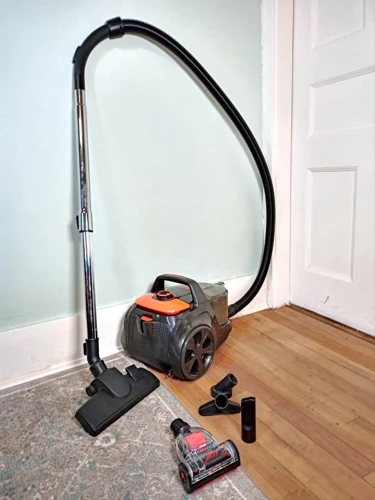
Have you ever wondered how a canister vacuum cleaner is able to effectively suck up dirt and debris from different surfaces? The mechanics behind this powerful machine might surprise you. In this section, we’ll take a closer look at the key components of a canister vacuum and how they work together to provide superior cleaning performance. From the motor and fan to the filtration system and suction hose, each part has a crucial role to play. So, let’s dive in and explore the inner workings of a canister vacuum cleaner! But before that, you might want to check out the differences between canister and upright vacuums in our article Canister vs. Upright Vacuums: Which Is Right for You? or if you’re looking for the best canister vacuum for hardwood floors, check our Canister Vacuum for Hardwood Floors: Top Picks and Buying Guide.
Motor and Fan
The motor and fan are the core components of a canister vacuum cleaner. The motor is responsible for creating the suction that pulls in dirt and debris from the floor and surfaces, while the fan is responsible for creating the air flow that moves this dirt and debris through the vacuum’s system and into the dustbin.
The motor and fan work together to create a strong suction force that is measured in air watts. The higher the air watts, the stronger the suction power of the vacuum cleaner. Typically, canister vacuums have a higher air wattage than upright vacuums, making them particularly effective in cleaning carpets, upholstery, and hard floors.
The motor and fan of a canister vacuum cleaner can come in different sizes and power levels, with more powerful motors being able to handle tougher cleaning jobs. However, it’s important to balance the motor’s power with energy efficiency to ensure that the vacuum doesn’t consume too much energy.
The motor and fan are protected by a series of filters that help prevent dust and debris from damaging the motor and reducing its life span. These filters include the pre-motor filter, which is usually a foam or felt filter that captures large particles before they enter the motor and fan, and the post-motor filter, which captures dust and allergens from the air that passes through the motor and fan.
To ensure that your canister vacuum cleaner’s motor and fan continue to function optimally, it’s important to clean and maintain the filters regularly. This includes washing the pre-motor filter and replacing the post-motor filter as needed, as well as regularly emptying the dustbin and changing the dust bag if the vacuum is a bagged model.
The motor and fan play a critical role in the performance of a canister vacuum cleaner and should be carefully considered when choosing a model. For more information on other important factors to consider, check out our guide to buying a canister vacuum or use our canister vacuum chooser tool to find the perfect model for your needs. Additionally, if you’re trying to decide between a bagged or bagless vacuum, read about the advantages and disadvantages of each type.
Filtration System
The filtration system of a canister vacuum cleaner is an essential component that ensures that the air being expelled from the machine is clean and free of dust and other allergens. An effective filtration system prevents tiny particles and microscopic organisms from escaping the vacuum and being distributed back into the air.
One of the most common types of filters found in canister vacuums is the HEPA filter (High-Efficiency Particulate Air filter). This filter is designed to trap up to 99.97% of particles as small as 0.3 microns, including pet dander, pollen, dust mites, and even some bacteria. HEPA filters are considered the gold standard in air filtration and are ideal for those with allergies or asthma.
Another type of filter frequently used in canister vacuums is the pre-motor filter. This filter is located between the dirt canister or bag and the motor and is designed to trap larger particles before they come into contact with the motor. A pre-motor filter extends the life of the vacuum cleaner by preventing debris from accumulating on the motor, which can cause damage and reduce suction power.
In addition to pre-motor and HEPA filters, some canister vacuums also feature a post-motor filter. This filter is located after the motor and is responsible for trapping any remaining debris that may have bypassed the pre-motor filter. Post-motor filters are typically made of foam or an air-permeable material that traps fine particles and ensures that the air being expelled from the vacuum is clean.
It is essential to remember that filters need to be changed or cleaned regularly to maintain optimal performance. Most canister vacuums come with a reusable or replaceable filter, and the cleaning frequency will depend on the model and brand. Refer to the vacuum’s user manual for instructions on how to maintain its filtration system properly.
The filtration system of a canister vacuum cleaner is a critical component that ensures clean air is expelled from the machine. HEPA filters, pre-motor filters, and post-motor filters all contribute to keeping the air clean and reducing the number of dust particles and allergens present in the home. By maintaining a clean filtration system, users can preserve their vacuum and keep it running optimally.
| Type of filter | Location | Particle Size | Purpose |
|---|---|---|---|
| HEPA | After the dustbin or bag | 0.3 microns | To trap up to 99.97% of particles and allergens, ensuring that the expelled air is clean |
| Pre-motor | Between the dustbin or bag and the motor | Large particles | To prevent debris from coming into contact with the motor, prolonging the life of the vacuum and reducing the risk of damage |
| Post-motor | After the motor | Small particles | To trap remaining particles and ensure that the air being expelled from the vacuum is as clean as possible |
Suction Hose and Nozzle
One of the most important parts of a canister vacuum cleaner is the suction hose and nozzle. The suction hose is typically made of a flexible material such as plastic or rubber and is designed to connect the vacuum’s main unit to the nozzle.
The nozzle, on the other hand, is the part of the vacuum that comes into direct contact with the surface being cleaned. Canister vacuums typically come with a variety of nozzles for different types of cleaning. For example, a brush nozzle can be used for upholstery, while a crevice tool can reach into tight corners and spaces.
When using a canister vacuum, it’s important to choose the right nozzle for the job at hand. Using the wrong nozzle can result in poor suction and a subpar cleaning performance. Always check the manufacturer’s instructions for guidance on which nozzle to use for which surface.
Another important aspect of the suction hose and nozzle is their ability to reach difficult areas such as under furniture or along walls. Canister vacuums typically have a long hose that can be attached to an extension wand to reach high or tight spaces. Make sure to fully extend the hose and use the appropriate attachments for optimal cleaning ability.
It’s also important to regularly check the suction hose and nozzle for any blockages or debris buildup. Clearing any clogs can help to maintain strong suction and improve the vacuum’s overall performance.
The suction hose and nozzle are crucial components of a canister vacuum cleaner. By choosing the correct nozzle for the job, reaching difficult areas, and maintaining their cleanliness, you can ensure your canister vacuum performs at its best for years to come.
What Are the Benefits of Using a Canister Vacuum Cleaner?
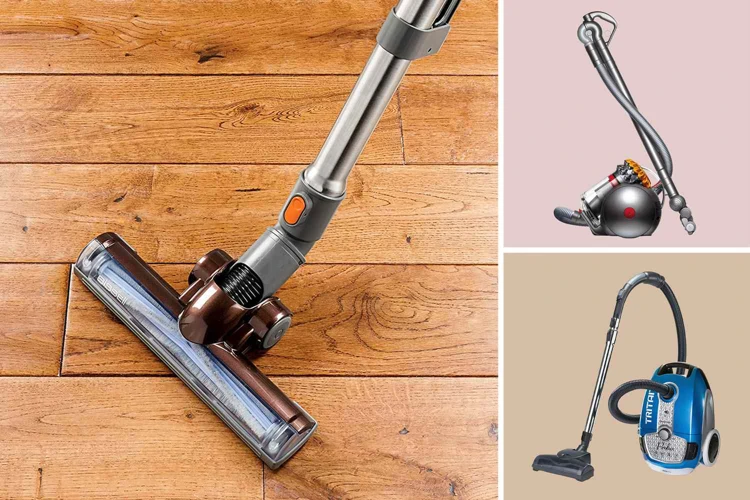
If you’re in the market for a new vacuum cleaner, it can be a bit overwhelming trying to sift through all the options. However, if you’re looking for a cleaning solution with versatility, improved maneuverability, and better cleaning performance, then a canister vacuum cleaner may just be what you need. Let’s take a closer look at the benefits that canister vacuums offer over other types of vacuum cleaners.
Improved Maneuverability
When it comes to vacuuming, maneuverability is key, and canister vacuums excel in this area. The canister vacuum’s design allows for greater flexibility and ease of movement than upright models.
Here are some reasons why canister vacuums have improved maneuverability:
| Reason | Description |
|---|---|
| Lightweight Design | Canister vacuums tend to be lighter and more compact than upright models, making them easier to move around and navigate tight spaces. The weight distribution of the canister and wand also places less strain on your back and shoulders, reducing fatigue during use. |
| Wand and Hose | The long wand and flexible hose of a canister vacuum allow you to reach under furniture, around corners, and into tight spaces with ease. This means you don’t have to move heavy furniture or contort your body to get to hard-to-reach areas, ultimately reducing the risk of injury. Additionally, the wand and hose can be detached and used separately for even more flexibility. |
| Easy to Push and Pull | The canister’s design allows for easy pushing and pulling, especially on hardwood or tiled floors. The wheels on a canister vacuum are typically larger and make for smoother movement across surfaces. This makes them ideal for large homes or commercial spaces where a lot of ground needs to be covered. |
Canister vacuums offer better maneuverability than upright models, making them an excellent choice for those who want a vacuum that is easier to move around and that can reach tight spaces with ease.
Better Cleaning Performance
One of the biggest advantages of using a canister vacuum cleaner is the superior cleaning performance it provides. The powerful motor and fan of a canister vacuum generate strong suction power, allowing it to effectively remove dirt, dust, and debris from a variety of surfaces. Its suction hose and nozzle can reach tight spaces and corners, leaving no spot uncleaned.
Here are some ways in which a canister vacuum cleaner provides better cleaning performance:
- The suction power is strong enough to lift even deeply embedded dirt and pet hair from carpets, rugs, and upholstery.
- The versatile attachments and accessories, such as crevice tools, dusting brushes, and turbo brushes, make it easy to clean a variety of surfaces and items, from furniture to clothing and even car interiors.
- The cleaning head of a canister vacuum cleaner is often adjustable, allowing you to switch between different floor types and adjust the height and suction power according to your needs.
- Many canister vacuums come with advanced filtration systems that can capture small particles, such as allergens and bacteria, and prevent them from circulating back into the air.
Another advantage of using a canister vacuum cleaner is that its design enables it to clean areas that may be difficult or impossible to reach with an upright vacuum cleaner. For example, its long hose and wand can easily reach under furniture, behind appliances, and up high onto shelves and ceilings. This makes it a valuable tool for deep cleaning and maintaining high levels of cleanliness in your home.
Whether you have pets that shed a lot, suffer from allergies or asthma, or simply want a better cleaning performance, a canister vacuum cleaner is a great investment. With its powerful motor, versatile attachments, and advanced filtration system, it can outperform many other types of vacuum cleaners and leave your home cleaner and healthier.
More Versatility
Canister vacuum cleaners offer more versatility than other types of vacuums. This is because they come with a variety of attachments and accessories that allow them to clean different surfaces and areas in your home. Here are some attachments that can make your canister vacuum even more versatile:
| Attachment | Use |
|---|---|
| Dusting Brush | Use to dust furniture, shelves, and delicate items |
| Crevice Tool | Use to clean narrow or hard-to-reach areas like baseboards, vents, and corners |
| Upholstery Tool | Use to vacuum upholstery, curtains, and mattresses |
| Pet Tool | Use to pick up pet hair and dander from carpets, furniture, and stairs |
| Bare Floor Tool | Use on hardwood, tile or other uncarpeted surfaces without scratching them |
| Extension Wand | Use to clean high or hard-to-reach areas like ceilings or behind furniture |
Having these attachments on hand allows you to tackle virtually any cleaning job in your home. Whether you are cleaning carpets, bare floors, upholstery or hard-to-reach areas, you can do it all with a canister vacuum cleaner. So if you are looking for a vacuum cleaner that is versatile and can clean any area in your home, a canister vacuum may be the perfect choice for you.
How to Choose the Right Canister Vacuum Cleaner for Your Needs
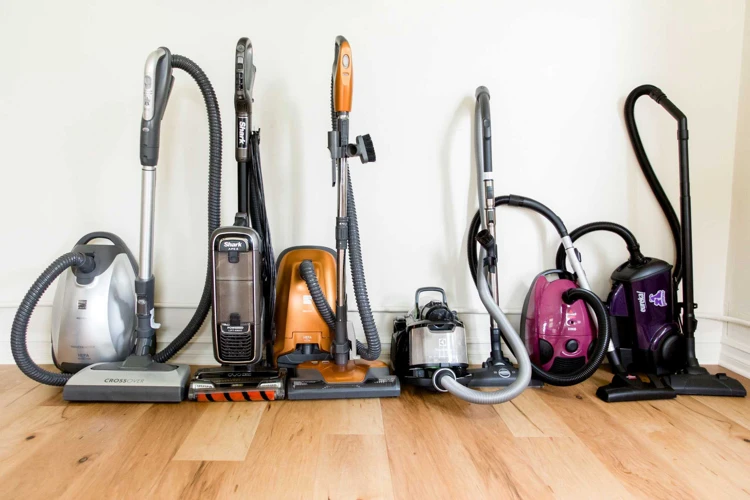
Are you in the market for a new canister vacuum cleaner but don’t know where to start? With so many options available, it can be overwhelming to choose the right one for your needs. But fear not, we are here to help you make an informed decision. In this section of our article, we will cover the important factors to consider when choosing a canister vacuum cleaner that suits your home and lifestyle. From the type of flooring to additional features, noise level, and weight, we’ve got you covered. Keep reading to ensure you make the best choice for your cleaning needs.
Type of Flooring
One of the most important factors to consider when choosing a canister vacuum cleaner is the type of flooring in your home. Different types of floors require different types of vacuum heads and brushes to clean effectively. Here’s a table that breaks down the best type of vacuum head for each type of flooring:
| Type of Flooring | Best Vacuum Head |
|---|---|
| Hardwood | A vacuum head with soft bristles or a hardwood floor attachment with felt pads |
| Carpet | A vacuum head with a beater brush |
| Tile | A vacuum head with soft bristles or a tile floor attachment with small brushes |
| Laminate | A vacuum head with soft bristles or a laminate floor attachment with felt pads |
| Pet Hair | A vacuum head specifically designed for pet hair with powerful suction, a beater brush or rubberized bristles and a tangle-free design |
As you can see, the type of vacuum head you choose will depend on the flooring in your home. If you have a mix of different flooring types, you may want to consider a canister vacuum cleaner that comes with multiple attachments that can easily be swapped out as needed.
It’s also important to consider if the vacuum head height can be adjusted. A vacuum head that is too low for carpet can cause damage to the carpet fibers, while a vacuum head that is too high will not clean effectively. Adjustable-height vacuum heads are ideal for those with both carpet and hard flooring in their home.
Taking the time to choose the right vacuum head for your flooring type will ensure that your canister vacuum cleaner is performing at its best and will prolong the life of your flooring.
Additional Features
When choosing a canister vacuum cleaner, there are a variety of additional features that you may want to consider. Here are some of the most common features available:
- Adjustable Suction Power: Many canister vacuums come with adjustable suction power, allowing you to decrease suction for more delicate surfaces or increase suction for tougher messes.
- Bagless: Bagless canister vacuums eliminate the need for replacement bags and can save you money in the long run. Instead, you simply empty the dustbin and clean the filter when necessary.
- Automatic Cord Rewind: With this feature, the vacuum’s cord automatically rewinds at the push of a button, making it convenient for storage.
- HEPA Filtration: HEPA filters can trap up to 99.97% of airborne particles, making them a good choice for those with allergies or respiratory problems.
- Cord Length: Consider the length of the cord when deciding which vacuum cleaner to purchase. A longer cord will mean you can cover more ground without having to unplug and move the vacuum as frequently.
- Noise Level: If you have sensitive ears, you may want to look for a vacuum with a lower decibel rating. Some vacuum cleaners have a “quiet mode” to further reduce noise.
- Attachments: Many canister vacuums come with a variety of attachments such as crevice tools, dusting brushes, and upholstery tools to help you clean a wide range of surfaces efficiently.
- Retractable Brush: A retractable brush can make transitioning from carpets to hard floors a breeze. When the brush is retracted, it won’t scratch your floors. When its extended, the brush helps to agitate and remove dirt and debris from carpets.
While some of these features are must-haves for some users, others may not be necessary for your needs. It’s important to consider which features are important to you and which ones you may be able to live without.
Noise Level and Weight
When choosing a canister vacuum cleaner, there are a few important factors to consider, including the noise level and weight. These two factors can greatly affect your overall experience with the vacuum cleaner, so it’s important to choose a model that fits your needs.
Noise Level:
Nobody likes a vacuum that’s too loud, especially if you live in an apartment or have roommates. To avoid disturbing others, consider a canister vacuum cleaner with a low noise level. Some models come with noise reduction features, such as insulated motors and sound-absorbing materials on the inside of the vacuum.
Weight:
The weight of the canister vacuum cleaner is also an important consideration, particularly if you have a large home or need to carry the vacuum up and down stairs. Look for a model that is lightweight and easy to maneuver. Some models have adjustable suction power, so you can adjust the power to suit the task at hand and avoid unnecessary strain on your arms and back.
Here are some additional tips to help you choose a canister vacuum cleaner that is right for you:
- Consider the size and layout of your home: If you have a small apartment or a home with mostly hard floors, you may be able to get away with a lighter, more compact canister vacuum. However, if you have a larger home or lots of carpeting, you may need a more heavy-duty model.
- Look for additional features: Some canister vacuums come with extra features, such as adjustable suction power, HEPA filters, and specialized attachments for cleaning upholstery and stairs. Consider which features are most important to you before making a purchase.
- Read reviews: Before buying a canister vacuum cleaner, be sure to read reviews from other customers to get an idea of its overall performance and reliability.
By considering the noise level, weight, and other important factors, you can choose a canister vacuum cleaner that meets your needs and makes cleaning your home a breeze.
Caring for and Maintaining Your Canister Vacuum Cleaner
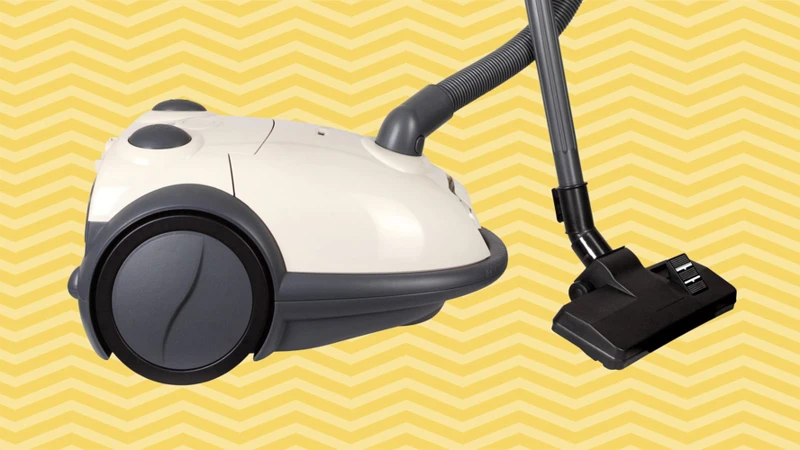
Keeping your canister vacuum cleaner in good working condition is essential for efficient cleaning and a longer lifespan. It’s important to properly care for and maintain your vacuum cleaner to ensure that it continues to perform at its best. Regular maintenance, including cleaning the dustbin and filter, changing the filter and dust bag, and replacing parts as needed, can help keep your vacuum in top shape. In this section, we will discuss effective cleaning and maintenance techniques that will help you get the most out of your canister vacuum cleaner.
Cleaning the Dustbin and Filter
Keeping your canister vacuum cleaner clean is essential to maintaining optimal cleaning performance and longevity. One of the most crucial aspects of keeping your vacuum in good working order is cleaning the dustbin and filter. Here’s how to do it:
| Step 1: | Empty the dustbin. Make sure to do this over a trash can or outside, as dust and debris can go flying. |
| Step 2: | Remove the filter(s) from the vacuum. Check your vacuum’s manual for specific directions on how to do this. |
| Step 3: | Tap the filter(s) to remove loose dirt and debris. If your filter is very dirty, you may need to wash it with soap and water. Check your vacuum’s manual to determine whether your filter is washable. |
| Step 4: | Allow the filter(s) to dry completely before replacing them in the vacuum. This may take several hours or overnight. |
| Step 5: | Wipe down the dustbin with a damp cloth. For stubborn dirt or debris, you can use a mild soap solution. |
| Step 6: | Allow the dustbin to dry completely before replacing it in the vacuum. |
It’s important to clean the dustbin and filter regularly to prevent clogs and maintain optimal suction. For best results, clean the filter(s) every month, or more frequently if you have pets or use your vacuum frequently. You can also refer to your vacuum’s manual for specific recommendations on how often to clean the dustbin and filter. By taking good care of your canister vacuum cleaner, you can ensure that it lasts for years and continues to clean your home effectively.
Changing the Filter and Dust Bag
Regular maintenance is key to keeping your canister vacuum cleaner in top working condition. One important aspect of caring for your vacuum is ensuring that the filter and dust bag are changed on a regular basis.
The filter: The purpose of the filter is to trap dust, dirt, and other particles as they are sucked into the vacuum. Over time, the filter will become clogged and less efficient, reducing the vacuum’s suction power. Be sure to check your vacuum’s user manual to determine how often the filter needs to be changed. Some filters can be rinsed and reused, while others are disposable.
The dust bag: As dirt and dust are collected by the vacuum, they are stored in the dust bag. As the bag fills up, it will become more difficult for the vacuum to do its job. Depending on the size of the bag and how often you use your vacuum, you may need to change the bag weekly or even more often. Always check the user manual for specific recommendations.
To change the filter and dust bag, follow these simple steps:
| Action | Steps |
|---|---|
| Turn off the vacuum | Make sure the vacuum is turned off and unplugged |
| Locate the filter and dust bag | Refer to the user manual to find the filter and dust bag, as their location may vary depending on the model |
| Remove the old filter and dust bag | Depending on the model, the filter and bag may be removed separately or together. Follow the instructions in the user manual to remove them safely. |
| Dispose of the old filter and bag | Make sure to dispose the old filter and bag properly, following your local regulations |
| Install a new filter and dust bag | Depending on the model, you may need to insert the bag and filter separately or together. Follow the instructions in the user manual to ensure that they are installed correctly |
| Securely close the vacuum | Make sure the vacuum is properly closed and ready for use. |
By following these steps, you can ensure that your canister vacuum cleaner continues to function optimally cleans your home efficiently. Regularly changing the filter and dust bag is an easy and effective way to maintain your vacuum and keep your home free of dust and dirt.
Replacing Parts and Schedule Maintenance
Maintaining your canister vacuum cleaner is important to ensure its longevity and performance. Regularly replacing worn-out or damaged parts is crucial to keep your machine running smoothly. Here are some tips on how to replace parts and schedule maintenance for your canister vacuum:
- Check the manufacturer’s instructions: The manufacturer provides instructions for proper maintenance of the vacuum. Refer to the manual for a guide on how to replace parts and perform regular maintenance.
- Replace parts as needed: Over time, parts of the vacuum such as the motor, fan, hoses, and brush rolls may wear out or become damaged. Replace these parts as needed to keep your vacuum running at its best.
- Replace the filters: The filters need to be regularly replaced to prevent clogging and ensure the vacuum’s suction power. Check the manufacturer’s instructions for the recommended frequency of replacement.
- Check the dustbin and dust bag: Empty the dustbin or replace the dust bag when it reaches the maximum capacity. A full dustbin or dust bag can decrease the vacuum’s suction power and performance.
- Schedule regular maintenance: Regularly check the canister vacuum’s critical parts such as the motor, fan, and hoses for any signs of wear, and perform necessary maintenance tasks. Schedule regular maintenance to avoid any sudden breakdowns during use.
- Consider professional maintenance: If you don’t have the technical know-how, consider taking your vacuum to a professional for maintenance. A professional can take care of any complex repairs or maintenance tasks.
By following these tips, you will be able to keep your canister vacuum running smoothly and effectively, ensuring optimal cleaning performance whenever you need it.
Tips for Using a Canister Vacuum Cleaner Efficiently
When it comes to keeping your home clean, using a canister vacuum cleaner can be a great choice. Not only do these vacuums offer powerful suction and versatile cleaning capabilities, but they are also designed for optimal maneuverability. However, even with the best canister vacuum cleaner at your disposal, there are still some tips you can follow to ensure that you are using it as efficiently as possible. Whether you are new to using a canister vacuum, or you simply want to get the most out of your cleaning routine, implementing these tips can help you take your cleaning game to the next level. So, without further ado, let’s dive into some helpful strategies for using your canister vacuum cleaner more effectively.
Set a Regular Cleaning Schedule
One of the best ways to ensure the longevity and optimal performance of your canister vacuum cleaner is to set a regular cleaning schedule. Doing so helps you to maintain a clean and healthy living environment, while also reducing the need for deep cleaning sessions.
Frequency
The frequency of your cleaning schedule will largely depend on your household’s specific needs. However, a good rule of thumb is to vacuum at least once a week. This can be adjusted based on factors such as the number of people and pets in the household, the level of foot traffic, and the presence of allergens.
Areas of Focus
When creating your cleaning schedule, be sure to focus on high-traffic areas, such as hallways and living rooms, as well as spaces where allergens and dust tend to accumulate, such as bedrooms and curtains. Don’t overlook other areas, such as upholstery and drapes, as they can also accumulate dust and debris.
Attach the Right Tools
To maximize the efficiency of your cleaning, make sure to attach the right tools to your canister vacuum cleaner. For example, a crevice tool is great for cleaning tight Spaces, while an upholstery tool helps you to clean fabrics with ease. Take some time to experiment with the various tools and attachments available to find the ones that work best for your cleaning needs.
Clean the Vacuum
When establishing a regular cleaning schedule, don’t forget to include your canister vacuum cleaner itself. Regularly clean the dustbin and filter, as well as any other removable parts, such as the brush roll. This helps to ensure that the vacuum is operating at maximum efficiency and can also prevent odors from accumulating.
Creating a regular cleaning schedule may seem like an extra responsibility, but it ultimately saves you time and effort in the long run. A well-maintained canister vacuum cleaner not only improves the quality of your living environment, but it also ensures that your investment lasts for years to come.
Use the Right Attachments and Accessories
When it comes to using a canister vacuum cleaner, one of the most important factors to consider is using the right attachments and accessories. These tools are designed to make cleaning easier and more effective, even in hard-to-reach areas. Here are some of the essential attachments and accessories that you should look for when using a canister vacuum:
| Attachment/Accessory | Function |
|---|---|
| Crevice tool | Helps you clean tight spaces and corners, such as between couch cushions or along baseboards. |
| Dusting brush | Features soft bristles that are perfect for cleaning delicate surfaces, such as bookshelves, picture frames, and lampshades. |
| Upholstery tool | Designed to help you clean furniture, curtains, and other upholstery without causing damage. |
| Floor brush | Comes in different sizes and types that are suited for different surfaces, such as hardwood floors, carpets, and tile floors. |
| Pet hair tool | Features powerful bristles that can pick up hair, dander, and other debris from a variety of surfaces, including furniture, carpets, and car interiors. |
| Extension wand | Enables you to reach high or hard-to-access areas, such as ceiling fans or cobwebs in corners. |
| Hard floor tool | Designed for use on hard surfaces, such as hardwood floors or tile, without causing damage or leaving scratches. |
By using the right attachment for the job, you can achieve better cleaning results and reduce the likelihood of damage or wear-and-tear on your vacuum cleaner. When selecting attachments and accessories, consider your specific cleaning needs and the surfaces you will be cleaning most frequently. Additionally, it’s important to follow the manufacturer’s instructions for use and care of these tools to ensure that they last as long as possible.
Take Your Time and Move Slowly
When using a canister vacuum cleaner, it’s important to take your time and move slowly to ensure that every nook and cranny is thoroughly cleaned. Here are some tips to keep in mind:
- Be patient: Don’t rush through the cleaning process. Take your time to get rid of every bit of dirt and debris. Moving quickly can cause the vacuum to miss dirt and other particles, and you may have to go over the area multiple times to get it clean.
- Slow and steady: Move the vacuum head slowly across the floor, using back-and-forth motions. This ensures that the suction can pick up every bit of dirt while preventing debris from scattering around.
- Use the right amount of pressure: Don’t press down too hard on the vacuum head, as this can actually push dirt into the carpet fibers, making it harder to get out. Too much pressure can also damage delicate surfaces such as hardwood floors or antique rugs.
- Be thorough: While it may be tempting to skip over some areas, such as under furniture, it’s important to clean every spot. Dust bunnies can accumulate quickly, so don’t forget to vacuum behind couches, under beds, and in corners.
By taking your time and moving slowly, you can ensure that your canister vacuum cleaner is doing the best job possible at keeping your home clean and tidy. Remember, a little patience goes a long way when it comes to keeping your home free of dirt and debris.
Conclusion
After exploring the design, functionality, and benefits of canister vacuum cleaners, it is clear that they are a highly versatile and effective tool for keeping your home clean. With their powerful motors, advanced filtration systems, and various attachments and hoses, canister vacuums make cleaning carpets, hard floors, and upholstery a breeze.
One of the biggest advantages of canister vacuums is their maneuverability. Their compact design, lightweight frame, and long hoses make it easy to clean tight spaces, stairs, and under furniture. Additionally, the improved suction power and efficient cleaning performance ensure that every nook and cranny is thoroughly cleaned.
When it comes to choosing the right canister vacuum for your needs, it’s important to consider the type of flooring in your home, as well as additional features like adjustable suction settings and brush roll controls. Noise level and weight can also be important factors to consider, especially if you have pets or children who may be sensitive to loud noises.
Once you have chosen a canister vacuum, it is important to properly care for and maintain it to ensure maximum performance and longevity. This includes regularly emptying the dustbin and cleaning or replacing the filter and dust bag. It is also important to schedule regular maintenance and replace any worn parts as needed.
To use your canister vacuum efficiently, set a regular cleaning schedule and take your time when cleaning. Use the right attachments and move slowly to ensure you are getting the most out of your vacuum.
In conclusion, canister vacuums are a versatile and powerful cleaning tool that can make keeping your home clean a breeze. Whether you have carpets, hardwood floors, or upholstery, a canister vacuum can help ensure every surface is thoroughly cleaned. Just remember to choose the right vacuum, properly care for and maintain it, and use it efficiently to get the best results.
Frequently Asked Questions
What makes canister vacuums different from other vacuums?
Canister vacuums have a separate canister that houses the motor and dustbin, while the suction nozzle and hose are separate. This design results in improved maneuverability and versatility.
How powerful are canister vacuums?
The power of a canister vacuum depends on the motor’s wattage and the design of its suction nozzle. Some models can generate suction of up to 250 air watts, making them powerful enough to clean carpets, hardwood floors, and upholstery with ease.
Are canister vacuums quieter than upright vacuums?
Canister vacuums tend to be quieter than upright vacuums, as the motor and dustbin are separated from the suction nozzle, which reduces noise levels. However, the noise level can vary depending on the model and motor power.
What type of filtration system does a canister vacuum have?
Most canister vacuums have a multi-stage filtration system that includes HEPA filters, washable filters, and foam filters. These filters trap dust, bacteria, and allergens, making them ideal for allergy sufferers.
Do canister vacuums work on carpets and hardwood floors?
Yes, canister vacuums work on both carpets and hardwood floors. Some models come with adjustable suction nozzles and different attachments that make them suitable for cleaning various surfaces.
Can canister vacuums clean pet hair?
Yes, canister vacuums are excellent for cleaning pet hair. Some models come with specific attachments designed to remove pet hair from carpets and upholstery with ease.
How often should you change the filter and dust bag in a canister vacuum?
It is recommended to change the filter and dust bag in a canister vacuum every three to four months or as per the manufacturer’s instructions. This helps to maintain the vacuum’s performance and prevent dust and allergens from being released back into the air.
What additional features should I consider when choosing a canister vacuum?
You may want to consider additional features such as cord length, hose length, weight, and storage options. Opting for a model with a long cord and hose can provide greater cleaning reach, while a lightweight and compact design can make it easier to maneuver and store.
How can I improve the lifespan of my canister vacuum?
To improve the lifespan of your canister vacuum, you should regularly clean and maintain the dustbin, filters, hoses, and attachments. Additionally, ensuring that you choose the right vacuum for your needs and use it correctly can also help to prolong its lifespan.
Do canister vacuums require any special maintenance?
Canister vacuums require regular maintenance, including cleaning the dustbin and filter, replacing the filter and dustbag, and scheduling periodic maintenance. following the manufacturer’s guidelines and using quality parts and accessories can improve the vacuum’s performance and longevity.




